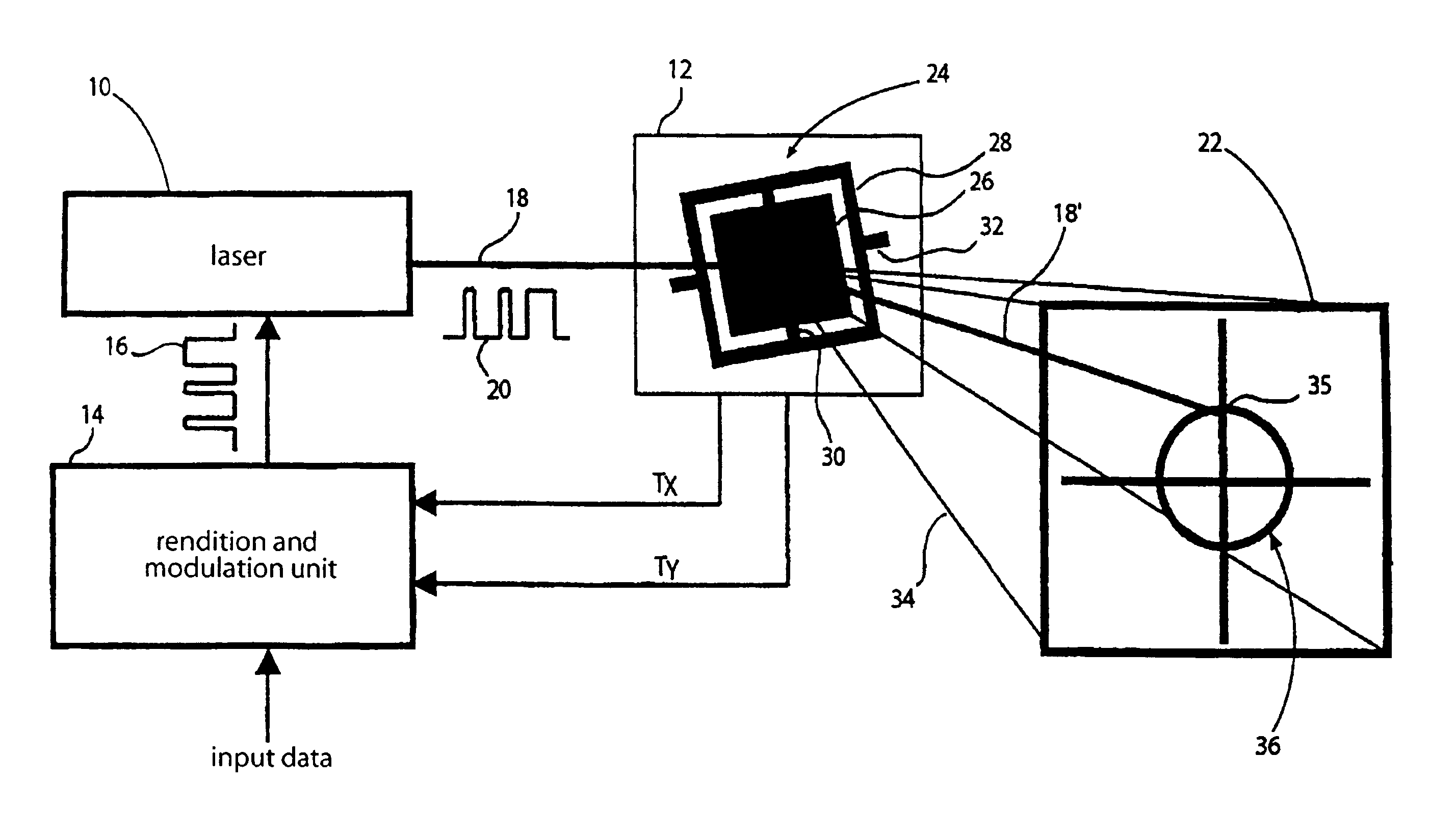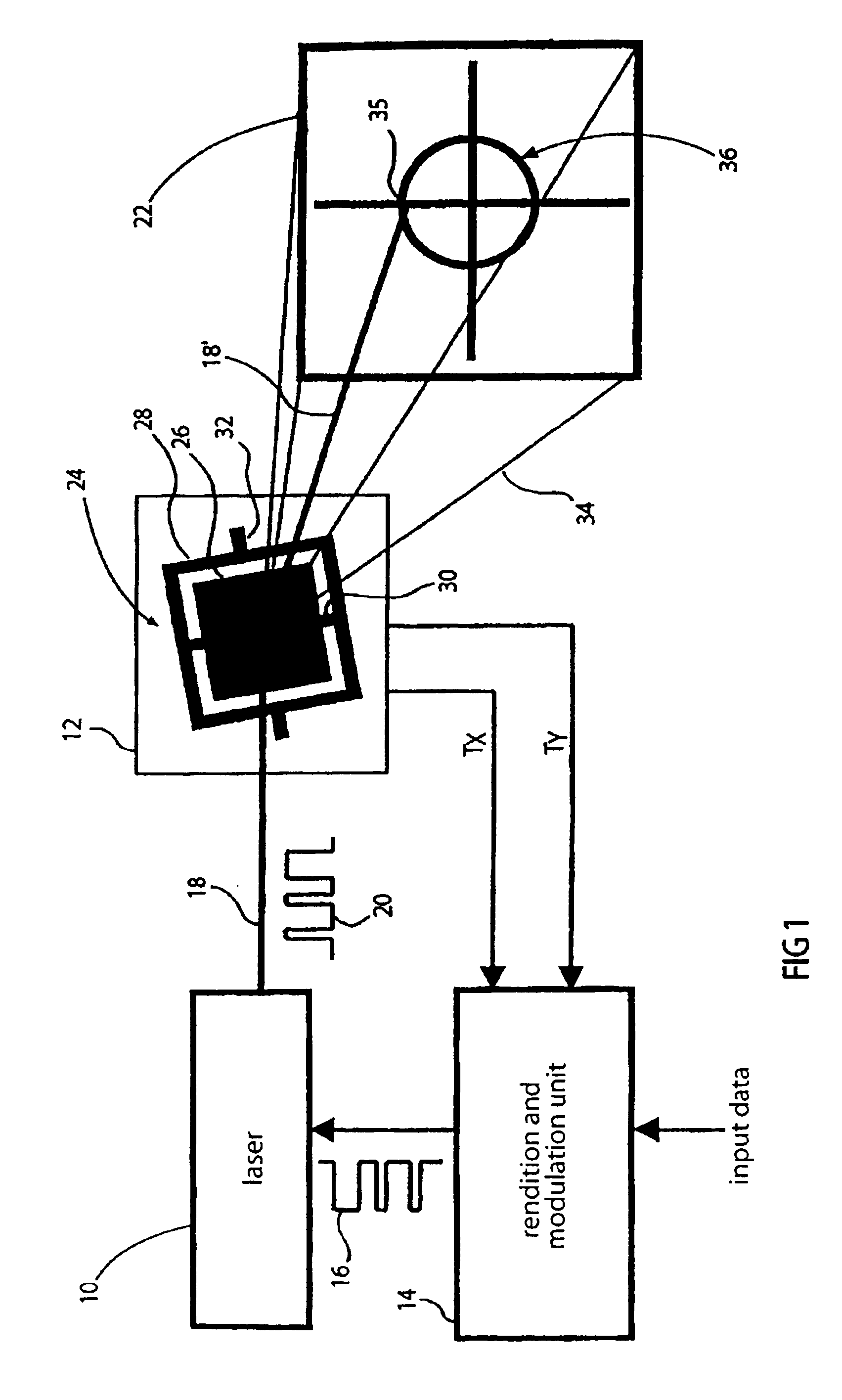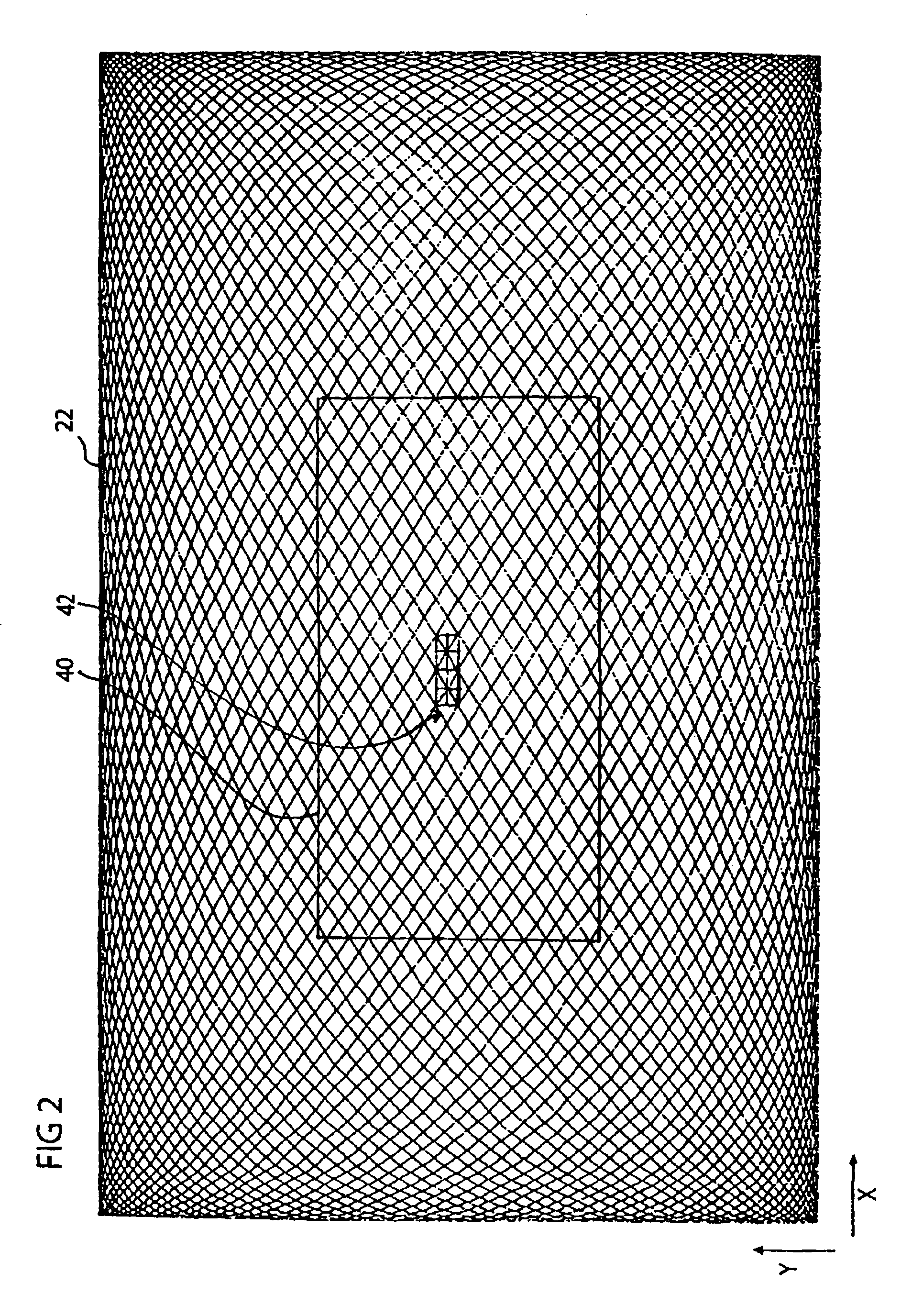Projection apparatus
a technology of projection apparatus and projection screen, which is applied in the field of projection screen, can solve the problems of high price of parallel-type projectors, high production cost, and high production cost, and achieve low eigenfrequencies or resonance frequencies
- Summary
- Abstract
- Description
- Claims
- Application Information
AI Technical Summary
Benefits of technology
Problems solved by technology
Method used
Image
Examples
Embodiment Construction
With reference to FIG. 1, the construction of a projection apparatus according to one embodiment of the present invention is described first. It is pointed out that for better understanding the illustration of FIG. 1 is not embodied to scale. Furthermore, FIG. 1 is related to the projection apparatus for the monochrome representation of an image, although the present invention is also applicable to projection apparatuses providing the colored representation of an image.
The projection apparatus of claim 1 includes a laser 10, a deflection means 12 and a rendition and modulation unit 14. The rendition and modulation unit 14 receives at an input input image data representing the image to be projected and is connected to a control input of the laser 10 via an output, in order to send the digital control signal 16 thereto, by which the intensity of a laser beam 18 sent out from the laser 10 is modulated, as it is schematically illustrated by an intensity profile 20 corresponding to the p...
PUM
 Login to View More
Login to View More Abstract
Description
Claims
Application Information
 Login to View More
Login to View More - R&D
- Intellectual Property
- Life Sciences
- Materials
- Tech Scout
- Unparalleled Data Quality
- Higher Quality Content
- 60% Fewer Hallucinations
Browse by: Latest US Patents, China's latest patents, Technical Efficacy Thesaurus, Application Domain, Technology Topic, Popular Technical Reports.
© 2025 PatSnap. All rights reserved.Legal|Privacy policy|Modern Slavery Act Transparency Statement|Sitemap|About US| Contact US: help@patsnap.com



